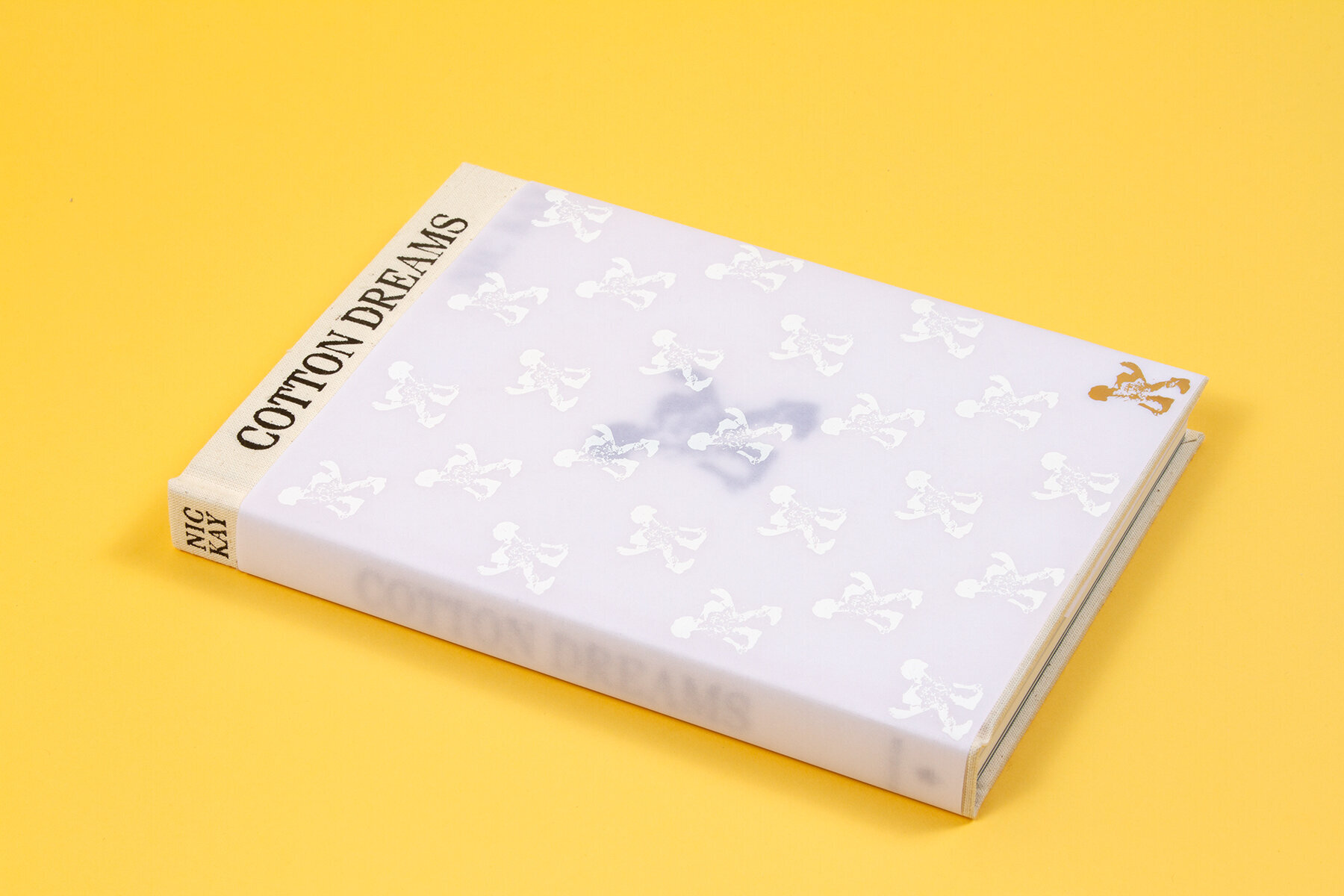BOOK REVIEW:
On Nic Kay’s “Cotton Dreams"
By Rafael Soldi | Published April 21, 2020 in Strange Fire Collective

Courtesy of the artist and Candor Arts
Cotton Dreams is a scrapbook—yet another tool through which Kay’s 21st century practice reclaims power in the shadow of American enslavement. This book brings together over a decade of public and private interventions aimed to disarm social and political systems of oppression. “Some of us inherit antique jewelry and property. I have inherited my style, attitude, and Blackness.” Kay writes, “Throughout this cotton journey [I’ve learned] that dignity is at the center of this Blackness and style: a fight for self, the ability to shape one’s future, and access to a quality of life.”
Only a basic grasp of the history of enslavement in the United States is needed to understand that cotton—raw cotton on the stem especially—holds a tortured history as a symbol of a shameful time. Kay unapologetically links their present to this history to remind us that the story is far from over: modern America was built by slaves and we’re living in it. “There are no aspects of the cotton industry that cannot be used to think through the interconnections between race, gender, sexuality, the environment, and class—the colonial matrix of power.”
The backbone of Cotton Dreams is an essay broken up into four parts—printed on uncoated grey paper—punctuated by contrasting, tactile sections that highlight their performances, photography, collage, and text-based works. Kay’s words seamlessly weave candid personal stories with rigorous musings that weaponize the history of cotton, media headlines, and thoughts on fashion to rebuke the armor that protects oppressive American institutions. The plates—artworks—throughout provide opportunity for meditation, amusement, and participation, effectively slicing the long-form essay into digestible parts and bisecting it with unexpected materials and mediums.



Courtesy of the artist and Candor Arts
Kay narrates returning to private childhood binders filled with magazine cut-outs picturing sexy editorials that posed witness as a formula for access and success. They write of shame, “I blamed myself for [the discrimination] I tolerated [at work] because of my early yearnings to stylistically climb into a seat at the table. […] Only time would allow me to see that I had not been immune to the oppressive aspects of the world I admired.” Toward the back of the book one finds a series of fold-outs, reproductions of zines previously created by Kay. These lo-fi objects contrast brilliantly with the formality of the rest of the book. Employing collage, appropriation, and original text, each of the five fold-out zines pack the energy of teenage defiance with the wisdom and urgency of an artist demanding answers.
One zine is a critical letter of dissent addressed at Vogue. Unfolding it reveals a smattering of had-written words: “Appropriation” “Exoticism” “Desire” “Fantasy” “Queer” “Opulence” “Labour” “Whiteness”, as if carved onto a tree. Another zine is a guide, “How to SURVIVE retail without losing your SOUL.” And one more fold-out collages—in bright crimson-red—images depicting hands, slave ships, luxury watches, and Kay’s own likeness picking cotton, all layered with a repeated “Pick your own FUCKING COTTON!” behind.




Courtesy of the artist and Candor Arts